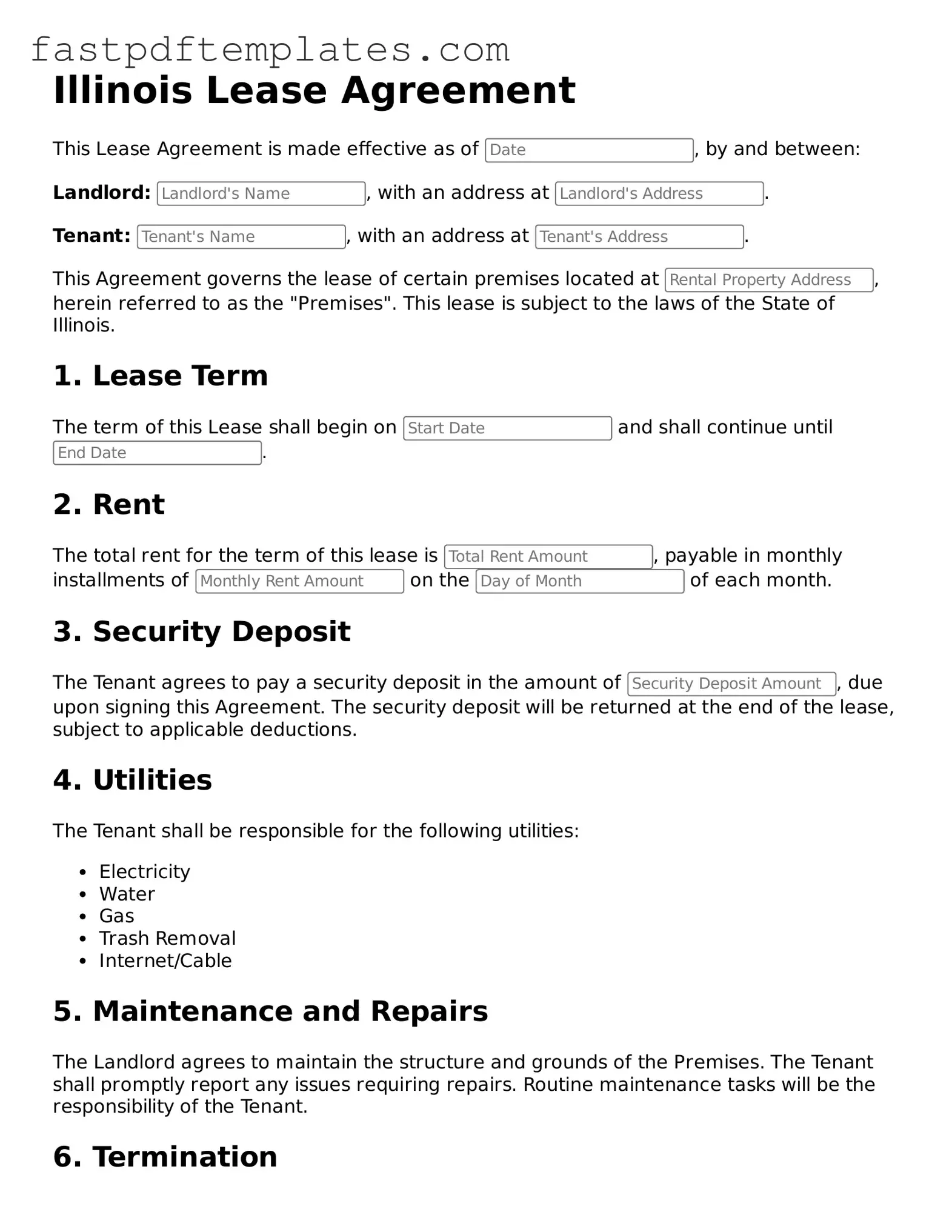Attorney-Approved Illinois Lease Agreement Document
The Illinois Lease Agreement form is a legally binding document that outlines the terms and conditions between a landlord and tenant for renting a residential property. This form serves to protect the rights of both parties, ensuring clarity and understanding throughout the rental period. Understanding this agreement is crucial for anyone looking to rent or lease property in Illinois.
Access Document
